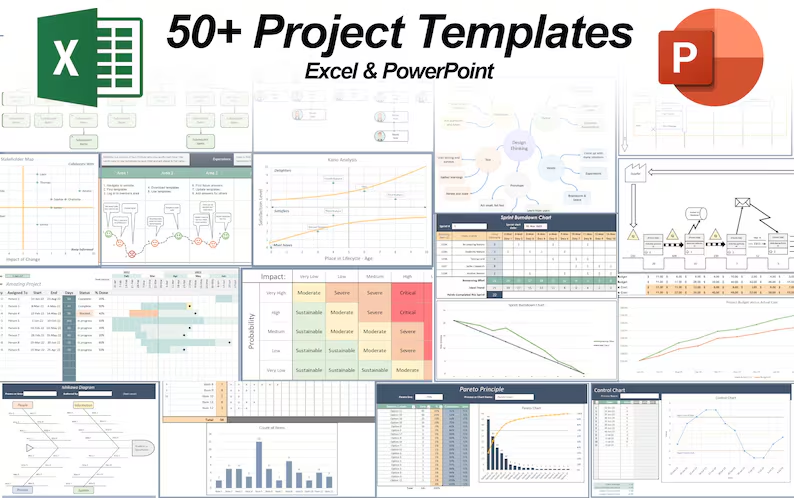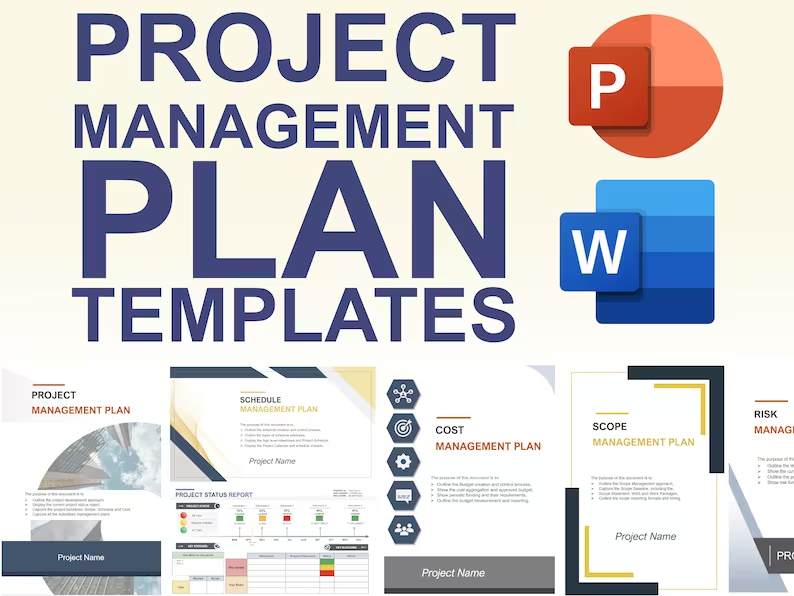 Four Game-Changing Learning Techniques
Four Game-Changing Learning Techniques
Have you ever struggled with school or learning something new? Whether you’re studying for a degree, a certification like the PMP, or just trying to grasp a new concept, learning can be challenging. However, everything changed for me when I discovered effective learning techniques. Here are four strategies that revolutionized my approach to learning. These methods complement each other and are incredibly easy to implement. Let’s dive in!
Technique 1: Mind Mapping and Work Breakdown Structure (WBS)
The first technique is mind mapping. Popularized by Tony Buzan in the 1970s, mind mapping is a powerful memory technique. It helps set the scene for your entire learning journey by visually organizing information. Here’s how it works:
Start with the Core Idea:
Place your main topic at the center. For instance, if you’re studying project management, this would be your central idea.
Branch Out:
From the central idea, create branches for subtopics like scope, schedule, and cost. Each of these subtopics can further branch out into more detailed topics, such as turning schedules into activities and then into project timelines.
This method gives you a high-level overview and helps you understand how different concepts interconnect.
In a similar vein, the Work Breakdown Structure (WBS) breaks down a project into smaller, more manageable parts. For example, if you’re preparing for a marathon, your core components might include shoes, training, and stretching. Each of these can be broken down further (e.g., different types of training or stretches).
Technique 2: Practice Exams
Once you have a high-level overview with mind maps, it’s time to delve deeper using practice exams. Practice exams are beneficial because they force your brain to store and recall information. By actively searching for it in your memory, you are embedding it more effectively. Here’s why they work:
- Recall and Apply: Practice exams make you search for and apply information in various scenarios, reinforcing your knowledge.
- Real-World Application: They simulate real-world conditions, helping you prepare for actual exams or practical situations.
Regardless of your field—be it project management, mathematics, or any other subject—practice exams are a proven method to deepen your understanding and retention.
Technique 3: The Feynman Method
Named after renowned scientist Richard Feynman, the Feynman Method involves teaching what you’ve learned to others. This technique takes your learning to the next level for a few reasons:
- Understanding the material enough to speak about it: To teach something effectively, you need to understand it enough to talk about it.
- Answering others’ questions: Teaching others means fielding their questions, which helps clarify and reinforce your knowledge.
You can practice this method with study friends by giving short lessons or presentations. The process of explaining and discussing topics with others solidifies your understanding and uncovers any gaps in your knowledge.
Technique 4: Focus Techniques (Pomodoro, Peer Pressure, White Noise)
Even with all the right techniques, learning can be challenging if you lack focus. Here are some strategies to improve your concentration:
- Pomodoro Technique: Break your study time into 20-minute intervals using a timer. After each interval, take a 5-minute break. This method helps overcome procrastination by making study sessions more manageable.
- Positive Peer Pressure: Study in quiet places like libraries where the focused environment encourages you to concentrate.
- White Noise: Use background sounds like rain or crickets, which can help drown out distractions and enhance focus. You can find 10-hour loops of these sounds on YouTube.
As you practice these techniques, your ability to focus will improve over time.
You Can Do It!
By using these simple techniques of mind mapping, practice exams, the Feynman Method, and effective focus techniques, you can transform your learning experience and take it to the next level. These strategies will help you retain information, understand complex concepts, and ultimately succeed in your studies. Start implementing them today and become a learning superstar. You can do it!
See more PMP Articles and Tips for Passing your Exam:
- Explained: What Does a Business Analyst Do?
- Get David McLachlan’s Udemy Courses for $14.99 During March 2025
- Pass Your Exam With These 3 Powerful Psychology Tricks
- Want to Pass your PMP? Don’t Do These 6 Things
- What To Do If You Don’t Have A Product Owner
- Is the PMP Relevant in the Real World?
- The PMBOK Guide 8th Edition Draft – My Feedback
- Never Escalate, Never Close – Bad Advice for your PMP Exam
- The PMP Cheat Sheet – Are You Ready for the Exam?
- The PMP Fast Track
You can see what people are saying about David McLachlan here: REVIEWS
Navigate to Free Project Management and Leadership Articles through the links on the right (or at the bottom if on Mobile)



